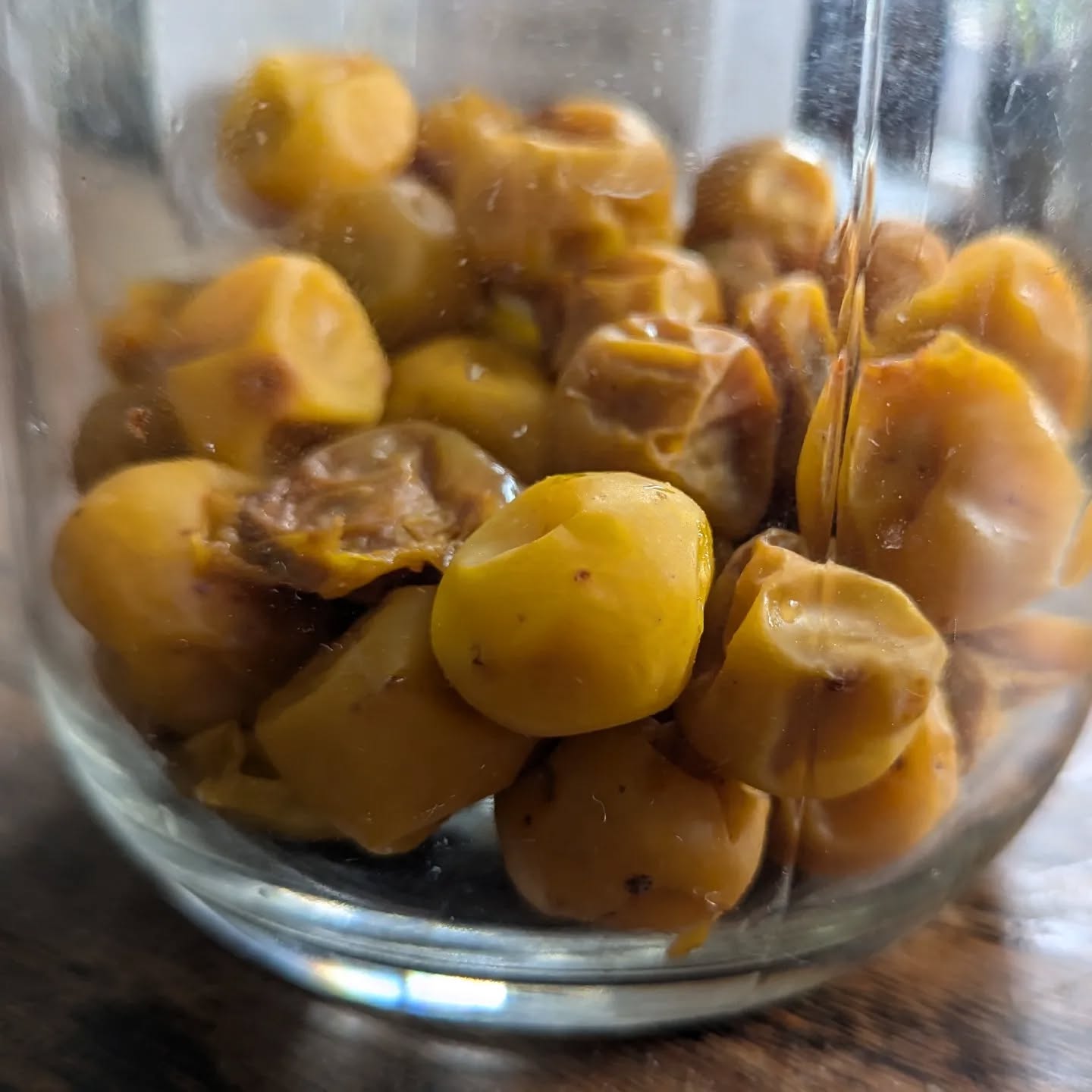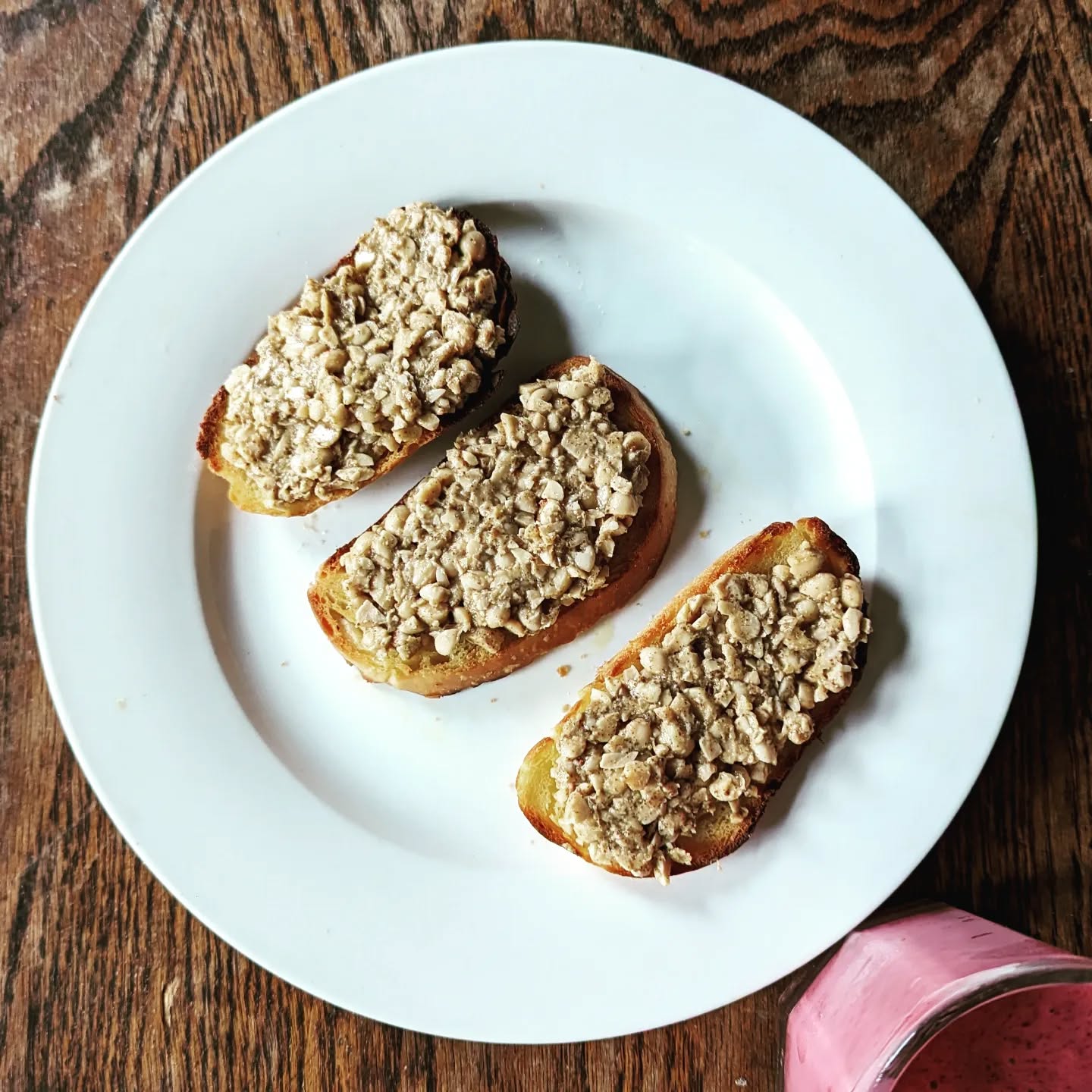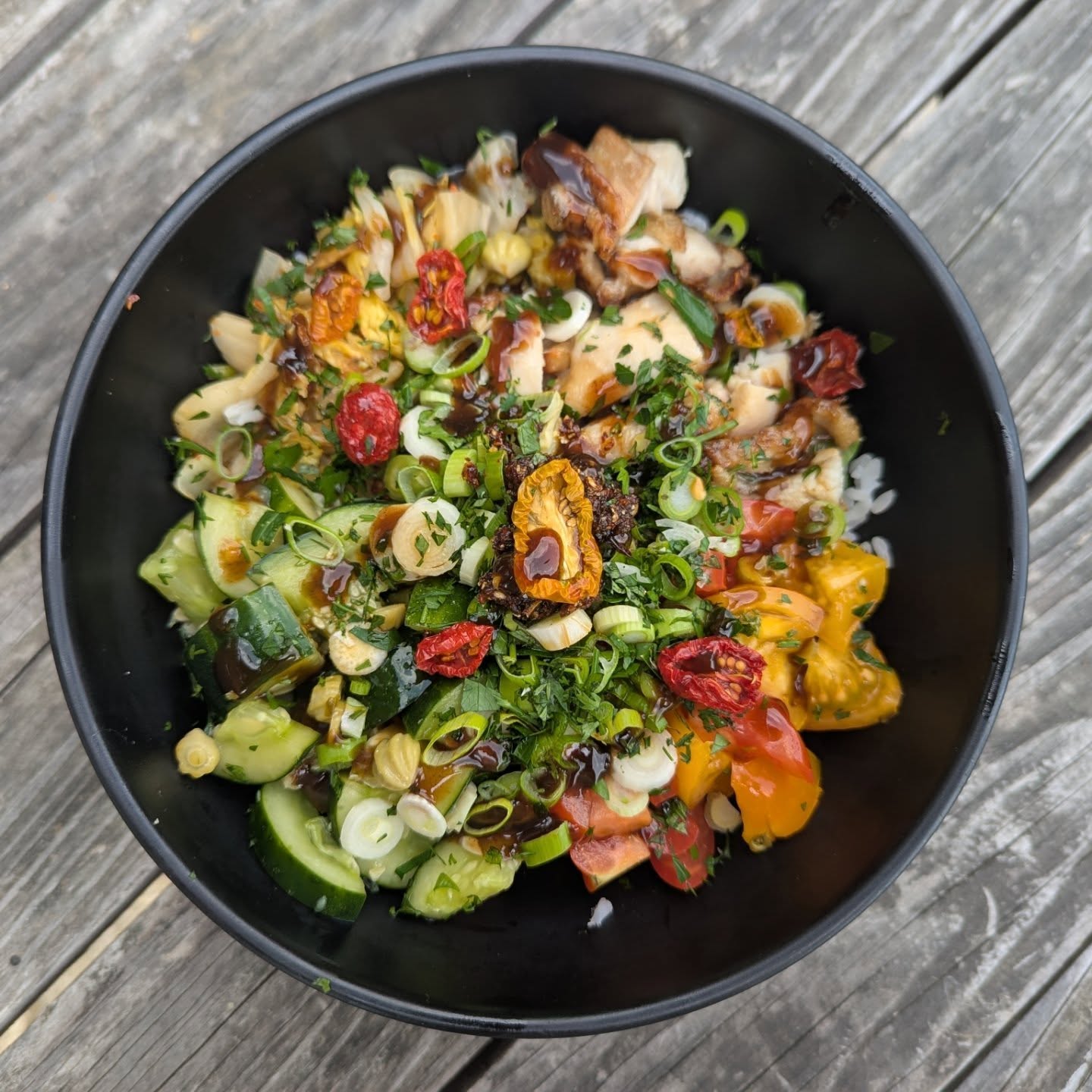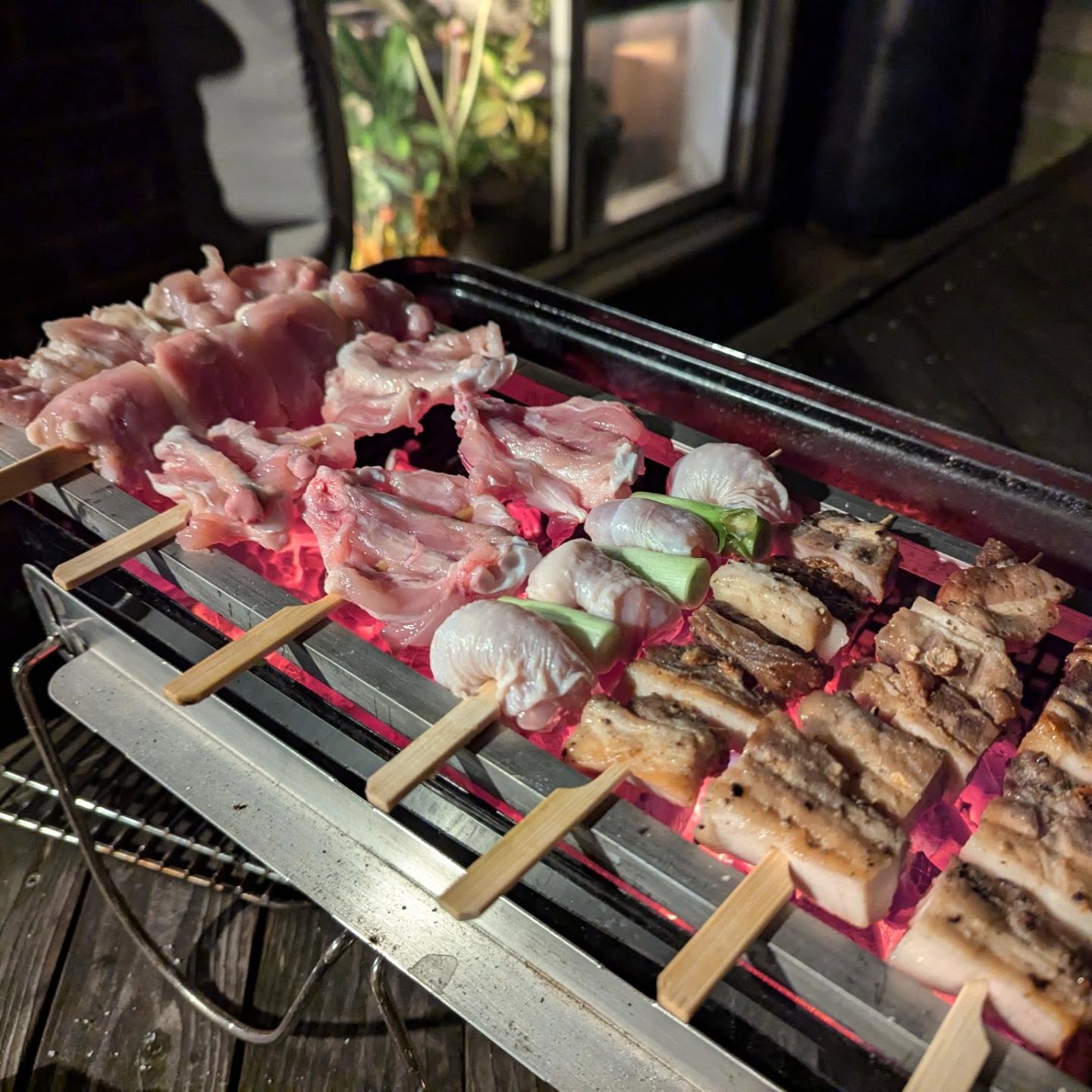· James Torr · Personal · 2 min read
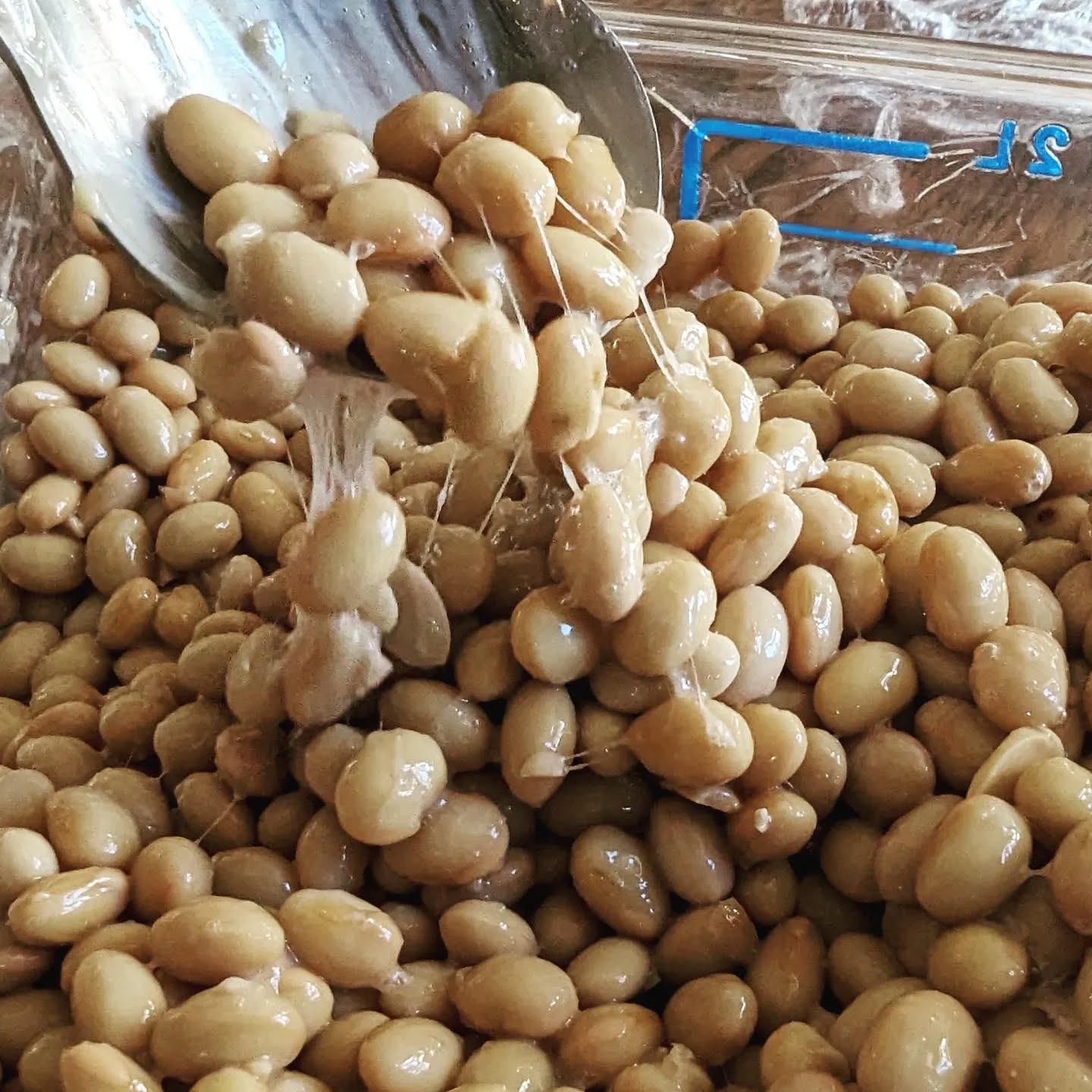
This rather sticky looking stuff is natto.
This rather sticky looking stuff is natto. Fermented soybeans with Bacillus bacteria. It’s chock full of some pretty healthy nutrients (Vitamin K2, nattokinase and others), and is traditionally eaten for breakfast in Japan. Just a few tablespoons mixed with a tare (sauce) of soy, mustard and mirin. The latter can be subbed with a pinch of sugar, msg and a tsp of water. It’s extremely good for you, so worth acquiring a taste for it, though I’m unlikely to be eating it for breakfast any time soon.
The method is surprisingly simple, especially if you have an electric pressure cooker with yoghurt setting. Soak for 24hrs. Drain. Pressure steam for 40 mins. Add 1/9 of a 45g natto container after it has cooled down to 40C or so. Mix well. Ferment at 40C for 24hrs. I used a dehydrator and cling film for mine. Once cool, store in fridge for up to 2 weeks. It’ll improve after a few days in the fridge. You can freeze in large ice cube trays for individual portions, alternatively sheet and cut into pieces once frozen.
This is how it should look after that time. Nice and sticky. It should have a pleasant nutty smell. Alternative legumes can be used apparently. Mung beans and chickpeas are on my to do list.
I’ve not gone into much detail but if any one has any process questions feel free to ask.
